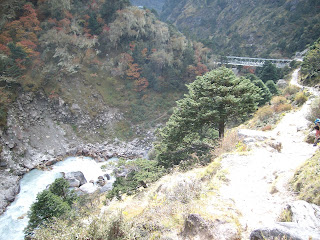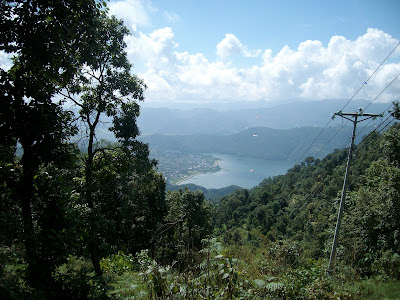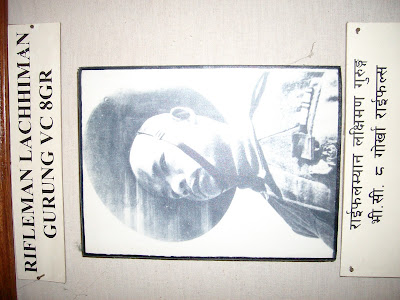As we finished EBC earlier than expected, I had time for one more activity before I left Nepal, so I decided to join Yan on his trip to Chitwan. This was Nepal's first national park, founded to help preserve the rich plant and wildlife found in this region.

After another six hour bus ride, to which I was becoming accustomed, we arrived at Hotel Rainbow Safari in time for lunch, before setting out for a walking tour of the local area. We were shown some traditional houses, made from leaves coated in mud (although most are now made from bricks and mortar - I think these were mainly preserved for our benefit!) before moving to the elephant sanctuary. There were many bull elephants here, which are mainly used for anti-poaching patrols (alas, still a problem). We saw them being fed 'elephant momos' - unlike the momos eaten traditional by Tibetan people, these consisted of grain wrapped up in leaves, and as well as being nutritious were obviously enjoyed by the elephants. We also learned the differences between Asian elephants and their African counterparts I have seen in Kenya and South Africa. The Asians are slightly smaller, have smaller ears, only one 'finger' on the end of their trunk compared to two on the Africans, and one extra toenail on each foot.
 |
| Mahout making momos |
Their dung is also used to make paper, firstly by burning it to remove the moisture, before the thin fibres can be processed to make paper!
In the evening we were privy to some traditional dancing routines, accompanied by rhythmic drum-beating, and one act even have fire sticks! With a few others, I was pulled from my chair to join in the last dance, which consisted mainly of trying to copy what the person in front was doing as we dancing round in a circle, without tripping over the young boy who decided to run between us!
On our second day, we had a ride on a river canoe (hollowed out from a single tree) followed by a walk through the jungle. Unfortunately it was overcast when we started, and heavily raining when we finished, so we didn't see much more than a few birds (and the few leeches who attached themselves to most of my party during the walk - thankfully I got away lightly!)
Later we saw the only twin elephants bred in captivity in the world - one statistic they are very proud of. Slowly poaching is decreasing in Nepal, but elephant ivory and rhino horn in particular still attract large sums on the black market.
 |
| Rhino drinking from river |
 |
| Elephant safari |
|
|
 |
| Sunset over Chitwan |
 |
| River Canoe |
 |
| Baby twins with mum |
 |
| Very wet! |
After lunch we had for me the highlight of our stay in Chitwan - an elephant safari. Sitting on a platform strapped to the elephant's back, we were taken on a safari. The best bit was when we saw a mother and baby rhino up very close (I think being on elephants were were ignored a lot more than we would have been in a car!).






















































